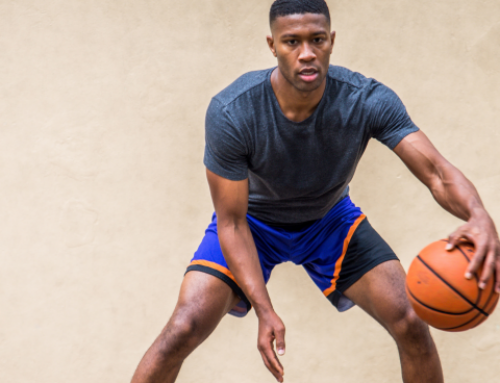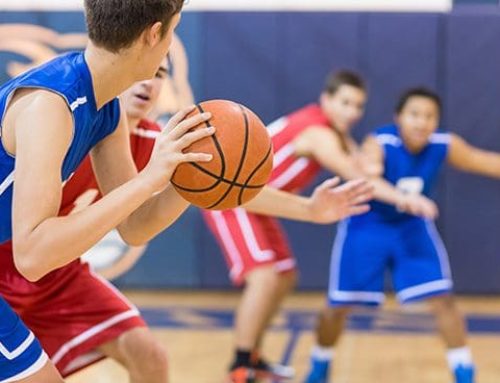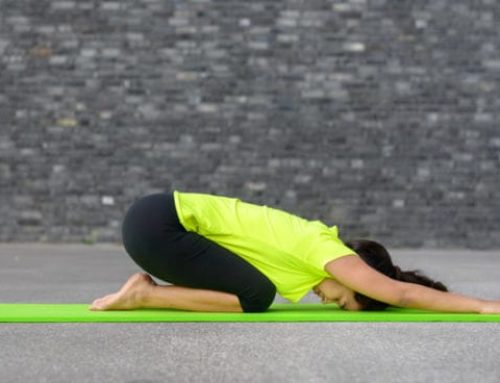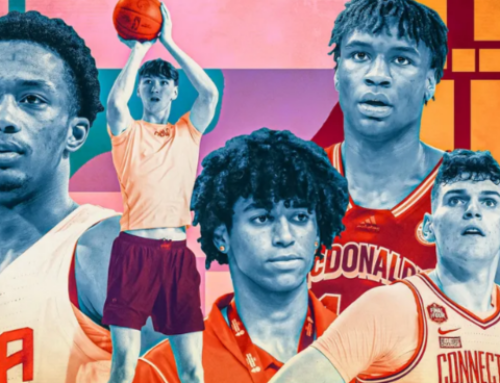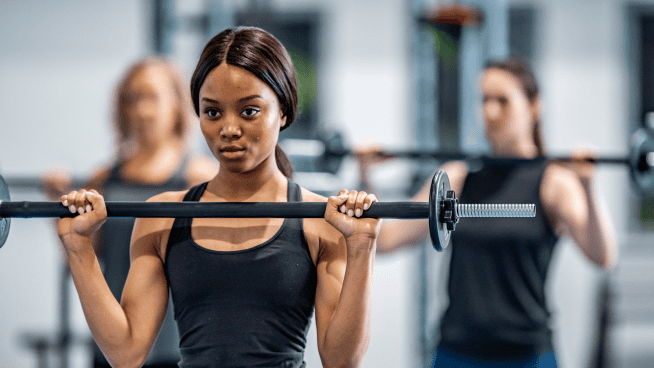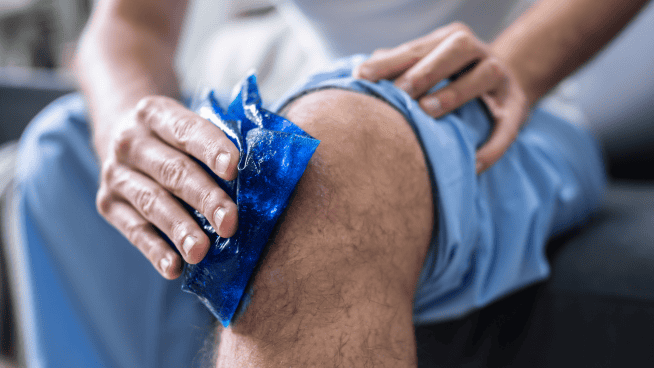Flexibility Tips from D-Wade’s Trainer
In the ’90s, the National Basketball Association was dominated by the likes of Michael Jordan, Scottie Pippen and Charles Barkley. Today, a new crop of superstars has emerged, with electrifying athletes like Dwyane Wade and Quentin Richardson representing the next generation of NBA elite.
But while the names of the NBA’s marquee players may have changed over time, one thing has remained the same—Tim Grover seems to have trained them all.
Grover, of A.T.T.A.C.K. Athletics and Hoops Gym in Chicago, is one of the world’s top basketball performance enhancement coaches. A cornerstone of Grover’s total training philosophy is injury prevention because, after all, if his players are not on the court, they aren’t helping themselves or their team.
According to Grover, one of the best ways to prevent injury can be summed up in one word: stretching.
“Good stretching can increase both flexibility and athletic performance, and can decrease the chance of injury,” Grover says. “Your stretching routine needs to include both static and dynamic stretches. All stretches are important, and a stretching routine should be personalized based on individual needs and weaknesses.”
A static stretch is any stretch that is performed, once the stretching position is reached, without movement. Simply put, if you “hold” the stretch, it is a static stretch.
“A good example of a static stretch is a forward lunge stretch,” Grover says. “To do a forward lunge stretch, start in a standing position, and then slowly lunge forward with the right leg. Make sure that the knee goes no farther than the ball of the foot. Push the left hip forward and hold for 15-20 seconds. Repeat on the other side.”
Dynamic stretches are stretches that are performed with movement. In other words, the athlete is using an actual motion in order to stretch the muscle.
“A good example of a dynamic stretch is a side to side kick-through,” explains Grover. “For a side-to-side kick-through, place your hands on a wall, keeping two to three feet away. Then, with the right knee slightly bent, swing the right leg to the right side and gently swing the leg to the left while swiveling the hips. Keep good posture. Feel the stretch in your hamstring muscle. Perform 10 slow kicks, and repeat with the left leg.”
In general, static stretches should be held for 15-30 seconds. The dynamic stretches should be repeated for approximately 10 repetitions. If time permits, try to repeat each stretch two to three times during the stretching session.
When should you stretch? Grover suggests stretching both before and after physical activity. The first stretching session should follow a five-to 10-minute warm-up period before activity. The second session should follow the five-to 10-minute cool-down period following the workout or competition.
Stretching can be an athlete’s first step towards injury prevention and enhanced performance. Take Grover’s word for it: “At A.T.T.A.C.K. Athletics, many athletes have increased their vertical jump and lateral movement through [our] stretching program.”
RECOMMENDED FOR YOU
MOST POPULAR
Flexibility Tips from D-Wade’s Trainer
In the ’90s, the National Basketball Association was dominated by the likes of Michael Jordan, Scottie Pippen and Charles Barkley. Today, a new crop of superstars has emerged, with electrifying athletes like Dwyane Wade and Quentin Richardson representing the next generation of NBA elite.
But while the names of the NBA’s marquee players may have changed over time, one thing has remained the same—Tim Grover seems to have trained them all.
Grover, of A.T.T.A.C.K. Athletics and Hoops Gym in Chicago, is one of the world’s top basketball performance enhancement coaches. A cornerstone of Grover’s total training philosophy is injury prevention because, after all, if his players are not on the court, they aren’t helping themselves or their team.
According to Grover, one of the best ways to prevent injury can be summed up in one word: stretching.
“Good stretching can increase both flexibility and athletic performance, and can decrease the chance of injury,” Grover says. “Your stretching routine needs to include both static and dynamic stretches. All stretches are important, and a stretching routine should be personalized based on individual needs and weaknesses.”
A static stretch is any stretch that is performed, once the stretching position is reached, without movement. Simply put, if you “hold” the stretch, it is a static stretch.
“A good example of a static stretch is a forward lunge stretch,” Grover says. “To do a forward lunge stretch, start in a standing position, and then slowly lunge forward with the right leg. Make sure that the knee goes no farther than the ball of the foot. Push the left hip forward and hold for 15-20 seconds. Repeat on the other side.”
Dynamic stretches are stretches that are performed with movement. In other words, the athlete is using an actual motion in order to stretch the muscle.
“A good example of a dynamic stretch is a side to side kick-through,” explains Grover. “For a side-to-side kick-through, place your hands on a wall, keeping two to three feet away. Then, with the right knee slightly bent, swing the right leg to the right side and gently swing the leg to the left while swiveling the hips. Keep good posture. Feel the stretch in your hamstring muscle. Perform 10 slow kicks, and repeat with the left leg.”
In general, static stretches should be held for 15-30 seconds. The dynamic stretches should be repeated for approximately 10 repetitions. If time permits, try to repeat each stretch two to three times during the stretching session.
When should you stretch? Grover suggests stretching both before and after physical activity. The first stretching session should follow a five-to 10-minute warm-up period before activity. The second session should follow the five-to 10-minute cool-down period following the workout or competition.
Stretching can be an athlete’s first step towards injury prevention and enhanced performance. Take Grover’s word for it: “At A.T.T.A.C.K. Athletics, many athletes have increased their vertical jump and lateral movement through [our] stretching program.”

